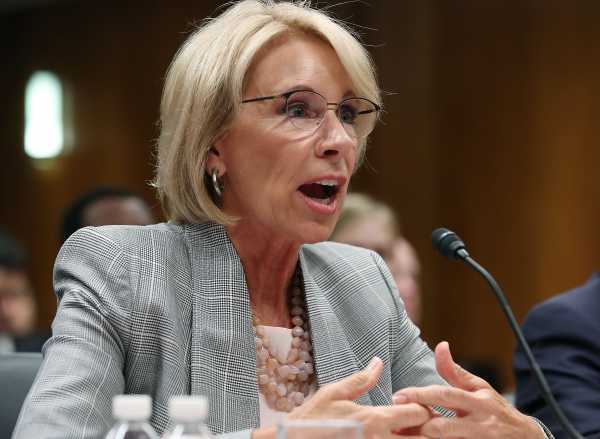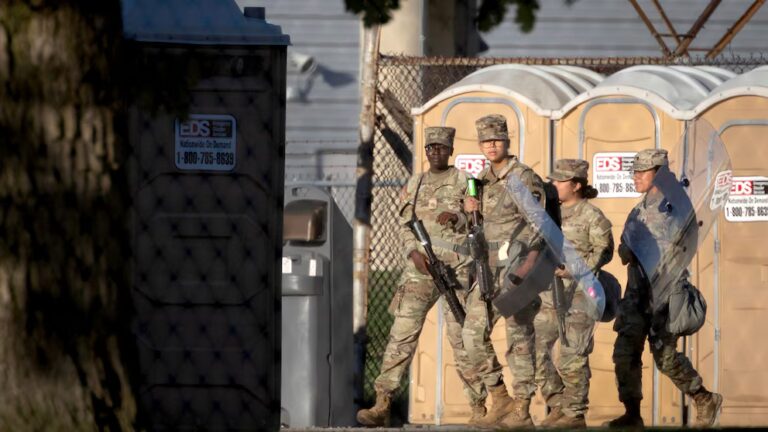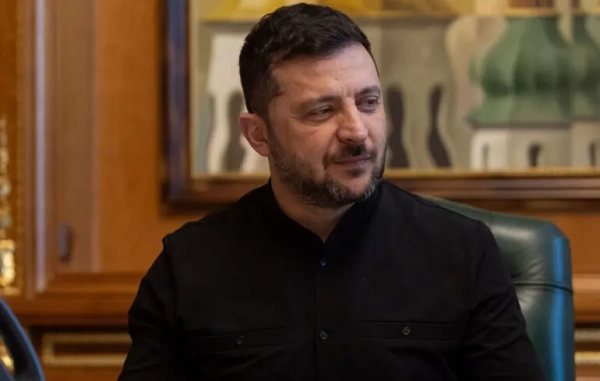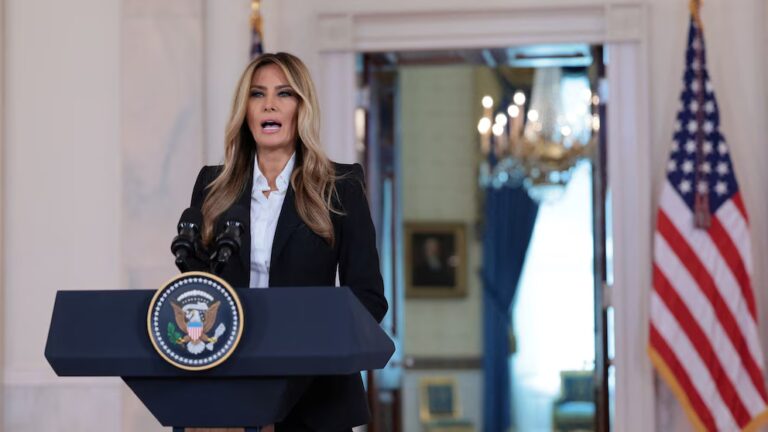
The Trump administration wants to combine the standalone Education and Labor Departments into a new Cabinet-level agency: the Department of Education and the Workforce.
The proposal is part of the administration’s broader plan to reorganize the federal government, released Thursday. Overall, the plan would eliminate and combine government programs and give private industry a bigger role, including in the US Postal Service. It would also rename the Department of Health and Human Services to the Department of Public Welfare (and give it jurisdiction over food stamps), among nearly 30 other changes to how the federal government operates.
“This effort, along with the recent executive orders on federal unions, are the biggest pieces so far of our plan to drain the swamp,” said Office of Management and Budget Director Mick Mulvaney in a statement touting the plan.
Despite the fanfare, the plan is just that — a plan — and likely to go nowhere in Congress, which has the sole authority to create, eliminate, and reorganize federal agencies. Presidents frequently propose reorganizing the federal government — Obama suggested his own reorganization in 2012 after a joke about government efficiency and salmon — but only one has successfully been enacted: the Department of Homeland Security was created after the 9/11 attacks and took over the Secret Service, which had previously been overseen by the Treasury.
There are so far a lot of holes in how exactly such a plan might be enacted — the biggest of which is what would be left on the cutting room floor. Some Education Department and Labor Department programs might be more efficient if combined. But the departments also have huge responsibilities — including making sure that schools, colleges, and employers follow federal law. It’s hard to judge the plan without knowing what it would get rid of.
The Department of Education and the Workforce, explained
Even the name of the new department makes it clear: The federal government thinks the point of education is to get a job. This is not an uncontroversial opinion, but it’s gained steam in recent years, in part due to concerns about whether students will be able to pay back the loans they’re taking on in order to pay for college.
The reorganization would achieve a holy grail for Republicans: eliminating the Education Department as a standalone agency. But it would eliminate it mostly in name only. (It’s not clear if polarizing Education Secretary Betsy DeVos would run the new department or if Labor Secretary Alexander Acosta would.)
The newly crafted Department of Education and the Workforce, “charged with meeting the needs of American students and workers,” would still send federal money to K-12 education and make grants and loans to college students. It would also take on most of the duties of the Department of Labor.
In some cases, combining those functions might make some sense. The line between “education” and “job training” has never been completely clear. If you lose your jobs and want to get more training to advance in your career, you could get money to pay for it through the Workforce Investment Act at the Department of Labor, or through student loans or Pell grants through the Education Department, depending on what option you pursue. A lot of what Americans think of as “job training” actually happens at community colleges, and merging the two departments could help those programs coordinate more closely.
But it could also end up sending more federal student grants and loans to fly-by-night job training programs without a track record of good results. One goal of the Trump administration’s plan is “expanding access to and driving improvement in high-quality, short-term programs that provide students with a credential, certification, or license in a high-demand field” — and whether that works or not depends heavily on how the federal government enforces the definition of “quality.”
Trump’s Education Department has generally been less interested in defining quality in education than the Obama administration was. But it’s also backed off on the oversight of for-profit colleges, who provide a lot of the career-oriented education.
The big question: what gets cut?
The point of a government reorganization isn’t to spend the same amount of money and hire the same amount of people to work for a department with a different name. Something, somewhere is getting cut.
The Trump plan indicates where some of those cuts might be — combining several federal grant programs into one would mean fewer people are needed to administer them. But the plan often describes moving duties around without saying whether the programs or staff in question would be cut.
The current Education and Labor Departments don’t just do education and job training. They’re also responsible for ensuring that colleges, schools, and employers follow federal law. The Education Department’s Office for Civil Rights investigates complaints that schools or colleges discriminated against students based on race, gender, national origin, and disability. At the Labor Department, enforcing labor laws — including wage and hour standards and child labor laws — is a huge part of the department’s responsibility, making up more than half of its staff.
The Trump proposal would combine those enforcement functions “to enhance the efficiency and coordination of enforcement.” But investigating whether a school district discriminated against a student with a disability doesn’t necessarily have much in common with determining whether employers are forcing their workers to work unpaid overtime, and it’s not clear whether this would lead to more efficient enforcement — or just less enforcement altogether.
That will depend on the details, and those have never been the Trump administration’s forte.
Sourse: vox.com






